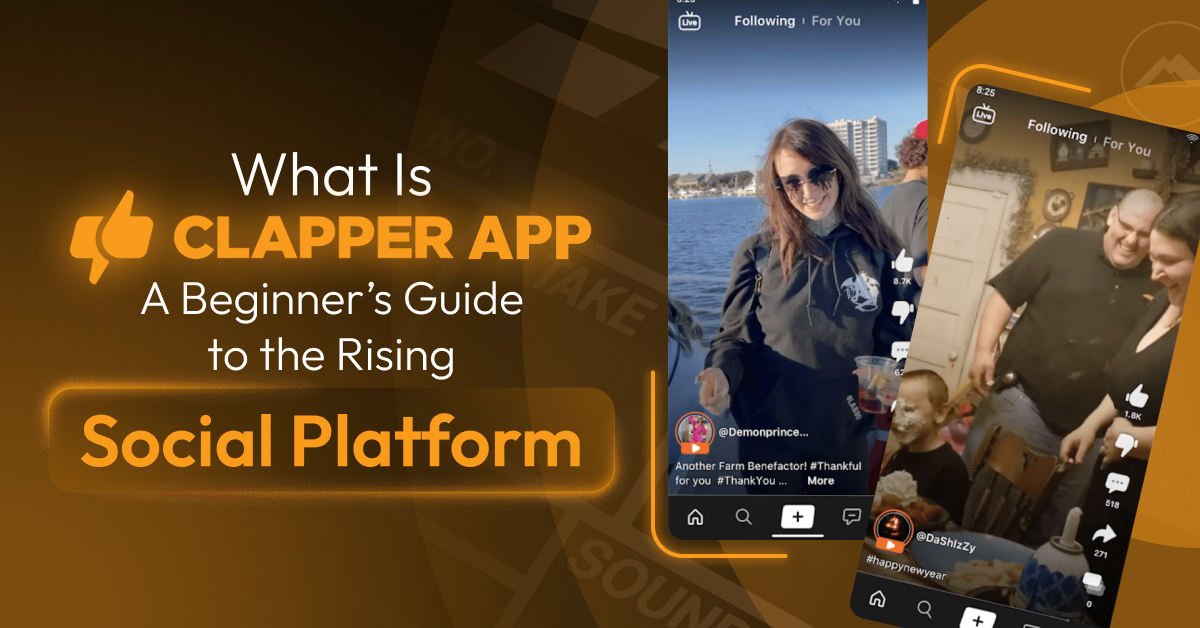Drug and alcohol addiction are serious issues that have devastating effects on individuals and their loved ones. Isn’t it?
According to Statista, more than 2% of the global population are addicted to drug and alcohol consumption. With the rise in addictive behaviors among individuals, developing an app that can help people overcome their addictions has become an important goal.
As the use of technology in our daily lives continues to increase, so do the opportunities to create innovative solutions to help those struggling with addiction.
Due to this reason, various businesses seek profitable opportunities in this industry. Are you also among them wanting to build an app for De Addiction? Then you have reached the correct place.
Thus, in this blog, we will discuss how you can build De Addiction app. With the right design and features, such an app can become a powerful tool that individuals can use to help them stay on track and establish healthier habits.
So, let’s begin.
What is a De Addiction App?

The de-Addiction app is a mobile application designed to help individuals overcome addictive behaviors, such as substance abuse or excessive use of technology.
These apps may offer features such as goal setting, reminders, journaling, support groups, and educational resources to assist users in their journey towards recovery.
They may also provide personalized strategies and tools to help users manage cravings, track their progress, and stay motivated.
Why Should Businesses Invest in De Addiction App?
Investing in De-Addiction app development can bring several benefits to a business. Firstly, it addresses a growing need for digital solutions to help individuals overcome addiction.
Secondly, it opens up new revenue streams and can attract new customers. Additionally, it enhances the company’s reputation as a socially responsible and health-conscious organization.
Furthermore, it can lead to potential partnerships and collaborations with treatment centers and healthcare providers. By investing in addiction app development, businesses can tap into a lucrative market while making a positive impact on society.
Examples of Top 5 De Addiction Apps
Here are examples of the top 5 De Addiction apps you must consider while building your app for your business. So let’s have a look at them.
| De Addiction Apps | Available Platforms | Ratings | Downloads |
| I Am Sober | Android | iOS | 4.7 | 1M+ |
| Sober Tool | Android | iOS | 4.7 | 100K+ |
| Quitzilla | Android | iOS | 4.7 | 1M+ |
| 12 steps AA Companion | Android | iOS | 4.8 | 50K+ |
| Recovery Path | Android | iOS | 4.8 | 100K+ |
1. I Am Sober
I Am Sober is a sobriety-tracking app that helps individuals monitor their progress and stay motivated in their journey toward sobriety. The app provides tools such as a sobriety calculator, a customizable progress tracker, and daily inspiration to help users maintain their sobriety.
2. SoberTool
SoberTool is a sobriety and recovery app that helps individuals maintain their sobriety and improve their overall mental health.
The app offers features such as daily inspirational quotes, a sobriety calculator, and a journal to track progress and reflect on experiences.
SoberTool also provides support through a community of users in recovery. So if you want to build an app for De Addiction like SoberTool, you must hire mobile app developers.
3. Quitzilla
QuitZilla is a smoking cessation app that helps individuals quit smoking and track their progress. The app provides tools such as a quit timeline, a cost calculator, and a nicotine reduction tracker to help users overcome their nicotine addiction. QuitZilla also offers daily inspiration and community support to help users stay motivated and achieve their goal of quitting smoking.
4. 12 steps AA Companion
12 Steps AA Companion is a recovery app that provides support for individuals following the 12 Steps of Alcoholics Anonymous (AA).
The app offers a digital version of the 12 Steps, daily meditations and reflections, and a journal to track progress. The app also provides a community platform for users to connect with others in recovery and share their experiences.
5. Recovery Path
Recovery Path is a mental health and addiction recovery app that provides a personalized treatment plan and support.
The app uses cognitive-behavioral therapy and mindfulness techniques to help users overcome addiction and improve their mental well-being. Recovery Path offers tools such as daily inspiration, journaling, and progress tracking, as well as community support through a private, secure platform.
The Top Alcohol Consumption Countries in 2022
| Alcoholic Countries | Per Capita in a Year |
| Seychelles | 20.50 liters |
| Uganda | 15.09 liters |
| Czechia | 14.45 liters |
| Lithuania | 13.22 liters |
| Luxembourg | 12.94 liters |
Key Features of De-Addiction App
A de-addiction app can provide several features to support individuals in overcoming addictive behaviors. Here are some common features that a de-addiction app might include:
1. Sign-In
Users can easily register into the app through their contact details or email id. They can also sign in through various social media networks. Once the sign-in process is done, users may easily incorporate the username, set a password, and then complete the profile.
2. Goal Setting
The app can help users set achievable goals for reducing or quitting their addictive behavior and track their progress toward meeting those goals.
3. Daily Tracking
Users can log their daily habits and track how often they engage in addictive behavior. This data can be used to identify triggers and provide insights into patterns of behavior.
4. Self-Assessments
The app can provide self-assessment tools and questionnaires to help users understand the severity of their addiction and the impact it has on their lives.
5. Cognitive-Behavioral Therapy (CBT) Techniques
The app can provide users with CBT techniques and exercises aimed at reducing negative thoughts and behaviors associated with addiction.
6. Support Network
Users can connect with others who are facing similar challenges, creating a support network to help them through the difficult process of overcoming addiction.
7. Medications and Treatments
The app can provide information about medications and treatments for addiction, including prescription drugs and behavioral therapies.
8. Relapse Prevention
The app can provide users with strategies and tools to help prevent relapses, such as mindfulness and stress-management techniques.
9. Reminders and Alerts
Users can set reminders and alerts to help them stay on track with their goals and make positive changes in their behavior.
However, to integrate this feature in your app, you can take help from on demand app development services provider.
10. Resources and Information
The app can provide access to a variety of resources and information about addiction, including articles, videos, and other educational materials.
11. Personalized Plan
The app can create a personalized plan for users, tailored to their specific needs and challenges, to help them overcome their addictions.
12. Real-Time Feedback
The app can facilitate users with real-time feedback and encouragement, helping to keep them motivated and on track toward their goals.
13. Privacy and Security
The app should have strong privacy and security features to protect users’ sensitive information and ensure their confidentiality.
14. Push Notification
Push notification is the most critical feature that every app must have. It lets users get updated with the latest updates and alerts.
How to Build An App for De-Addiction

Now that you are familiar with the features of De-Addiction app development, it is time to start the development procedure of your De-Addiction app. So let’s have a look at each of the following steps.
1. Define the Scope and Goal of the App
The first step to building an app for De Addiction is to define the scope and goal of the app clearly. It is vital to know your aim before commencing the development of your app.
You must determine the features and functionalities you want to integrate into your app. However, it will let you know who your target audience will be and what problem you want to solve through this app.
2. Research and Analysis
The next step to building an app for De Addiction is to research and analyze. Research the existing market to determine what features are commonly found in de-addiction apps and what is missing. Analyze what works well in these apps and what could be improved.
Knowing your potential audience will assist you in creating an application that fulfills the user’s requirements. However, you may also do a SWOT analysis that helps you know your competitors’ strengths and weaknesses.
3. Create a Design
Once you are done with the research and analysis part, it is time to create a design for your app. The user interface is an essential part of any app because it helps to attract customers. So, create a user-centered design that allows users to track their progress, set goals, and receive support.
Ensure that the app’s interface is visually appealing and user-friendly. So you need to hire dedicated developers who can design the overall layout, visual elements and appearance, logo design, and color scheme.
4. Choose a Tech Stack
Once you are done with the designing part, the next step to building an app for De-Addiction is to choose the right technology stack for your app. Below are some of the most important technology stacks you must include in your app.
#1. Frontend:
- React Native or Flutter for building cross-platform mobile apps
- HTML, CSS, JavaScript for web app
#2. Backend:
- js or Django for building the server-side application
- Firebase or AWS for storing user data and handling authentication
- REST APIs for connecting the frontend and backend
#3. Database:
- MongoDB or PostgreSQL for storing user information and app data
#4. Push notifications:
- Firebase Cloud Messaging or AWS SNS for sending push notifications to users
#5. Analytics:
- Google Analytics or Mixpanel for tracking app usage and user behavior
#6. Third-party APIs:
- HealthKit or Google Fit for integrating with the device’s health sensors
- Twilio or Plivo for SMS communication with users
#7. Other technologies:
- Git for version control
- Agile methodology for project management
It is just one possible stack, and the specific technologies used may vary depending on the requirements and constraints of the project.
5. Build De Addiction App
Once you are done with the tech stack, it is time to start the development of the backend and front end of your De Addiction app. It involves using a chosen programming language and platform to bring the app to life based on the design and goals defined in earlier steps.
Start with a minimum viable product (MVP) that includes the core features, then iteratively add more features as the app develops. This step requires technical expertise and attention to detail to ensure the app is functional and user-friendly.
So taking assistance from a proficient De Addiction app development company will be helpful as they will use the agile methodology for developing an app.
6. Testing phase
Now that you have built an app, it is time for the testing. It thoroughly checks the app’s functionality and user experience to identify bugs or performance issues.
It’s important to get feedback from real users to make necessary improvements and ensure the app meets their needs and expectations. This step is crucial to ensuring the app is of high quality and ready for launch.
7. Final launch
Now the time has come to release your app on the app store. The development team will launch the De-Addiction app on various platforms, including Apple Store and Google Store.
However, it is vital to promote your app on different marketing channels. A well-planned and executed launch can help increase visibility and downloads for your app.
Conclusion
A De-Addiction app can provide a valuable tool for individuals seeking to overcome addictive behaviors. However, it is important to note that it should not be used as a substitute for professional medical advice and treatment.
It should always be used in conjunction with other forms of support, such as therapy, support groups, and medical care.
Therefore, with the right approach and resources, a de-addiction app can be a powerful tool in helping individuals overcome addiction and lead healthier lives.
So hire a reputed mobile application development company that provides better solutions for your business.
Frequently Asked Questions
How much does it Cost to Build an App for De Addiction
The cost to build an app for De Addiction keeps varying with the technological update and various factors. A basic app’s estimated cost will be around $25000 to $35000. However, the cost will be increased by $50,000 and more with the integration of advanced features.
Which Are the Most Used App to Get Recovered from Drugs or Alcohol?
Numerous apps can ease the recovery process. But the most used and popular apps are as follows:
- SoberTool
- Nomo
- WEconnect
- I Am Sober
Is It Possible to Get Recovered Alcohol or Drug Addiction With an App?
Apps can be helpful for recovery but shouldn’t replace professional treatment. Addiction requires a comprehensive approach, including therapy, support, and medication. Consult a mental health professional for the best recovery plan.




























